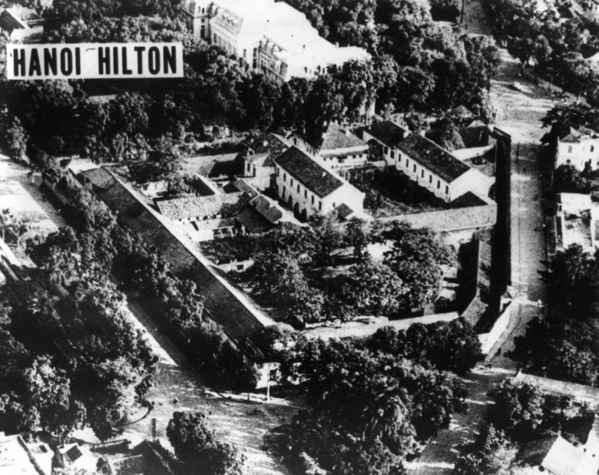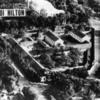Some of the most cherished memories from my military career are centered around the privilege of visiting with Veterans. Connecting with one of the last WWI veterans, Robley Rex, was amazing. Hearing individual accounts of WWII directly from members of the greatest generation, including Pearl Harbor survivors, was a gift. Stories from Korean War veterans, Vietnam veterans, Gulf War veterans, the many who we served alongside after the attacks on September 11, our allies, and even veterans of these wars who weren't on our side. These stories of selfless sacrifice and courage by men & women in uniform are examples of what makes our nation strong.
Each year on Veteran's Day, I'm reminded of the story of one of these courageous veterans I had the pleasure of meeting. Although our meeting was brief, his story is impactful and enters my thoughts almost daily. His experiences struck me so profoundly, they found their way into a speech I gave soon after our meeting. As a tribute to all our Veterans, here are some of the details of his heroic journey.
Serving as a helicopter Crew Chief in the U.S. Air Force, Airman First Class William "Bill" Robinson was shot down & captured on September 20, 1965, in North Vietnam. He was a resident of several prison camps, including the "Hanoi Hilton", until February 12, 1973. He is the longest-enlisted prisoner of war in American military history, surviving an astounding 2,703 days.
Soon after being captured, he was subjected to execution by firing squad. They fired 6 times….all blanks. After that, he knew he would survive because it would have been easy for them to kill him but, for some reason, he was spared. He emerged from daily torture and managed to put a smile on his face to give fellow prisoners hope. This simple act had a deep & lasting impact on the relationship he had with other POWs like the late Senator John McCain & Major General (retired) John Borling.
Bill Robinson with his captor in 1965.
Only 1 out of every 5 aircrew members shot down survived the war. Bill Robinson kept himself going with this mantra; “yesterday was when I was captured, today is now & tomorrow I’m going home”. This optimism helped him deal with the animosity he felt toward his captures.
He was an enlisted airman when their helicopter was shot down but he had such a profound impact on the officers he was captured with that they put him through officer training school all by their tap code.

After being rescued & returning home, he was commissioned and continued to serve until he retired at the rank of Captain on December 1, 1984.
For the first 3 ½ years of imprisonment, he was listed as MIA (Missing In Action) further worrying his family about his status. Below are just a few of the milestones the longest-enlisted POW in American history missed. What would you have missed if you were absent for over 7 years?
- In 1965 the “Sound of Music” premiered; the “Big Bang” theory won the Nobel Prize
- In 1966 “Star Trek” premiered; “The Pill” was released; Walt Disney died
- In 1967 PBS created; racial violence in Detroit, MI
- In 1968 “60 Minutes” debuted; MLK was assassinated
- In 1969 Neil Armstrong & Buz Aldrin landed on the moon; “Woodstock”
- In 1970 the Beatles broke up; Monday Night Football debuted; the floppy disc came out
- In 1971 M.A.S.H. debuted; racial desegregation passed the Supreme Court
- In 1972 the CAT scan was developed; HBO debuted; Title IX came out
- In 1973 the MRI was developed; the Watergate scandal; Roe v. Wade decision
Aerial surveillance of the Hỏa Lò Prison aka "Hanoi Hilton".
Years after being released, he was invited back to Vietnam to reconcile with his captors. He accepted gifts from the female guard featured on the postage stamp below & who he stated was just “doing her job”. On the trip, he refused to shake hands with the male guard who “enjoyed” his job of torture & killing. This was one of the ways he dealt with his resentment by putting pressure on the guard to reconcile his own actions.

Vietnamese stamp celebrating their enemy capture.
It’s obvious to everyone who meets him that his resentment has faded to disappointment…and that, it seems, he has learned to live with. When I asked what freedom meant to him, he simply replied...
"Doors with knobs on the inside."
To avoid living a life full of resentment we must address our trauma & frame it properly to transform it effectively. Awareness of his story of courage can help us as leaders in guiding others through personal & professional difficulties.
So, on this Veteran’s Day, thanks to all the brave men & women who have risked so much in service to our nation.
Thanks, Captain (retired) Bill Robinson for your example of courage in the face of so much adversity.
Welcome home.
It’s my hope all of us find time to reflect on what the gift of freedom means to us...today and every day.
*Read his amazing story in “The Longest Rescue: The Life and Legacy of Vietnam POW William A. Robinson”









Comments (1)